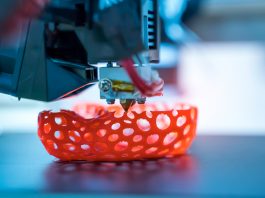A collaborative research team, including the University of Texas, Austin (UTA), has made a groundbreaking discovery regarding the actuators that control muscle movement.
What is an actuator?
An actuator is a tool that converts energy and signals going into the system to produce a motion that is either rotary or linear.
More specifically, actuators that control muscle movement are of great interest around the globe. This is because, over the more recent years, it has led to numerous advances to improve technology in both robotics and prosthetic limbs. However, it has been observed that producing these actuators involves complex processes, as well as expensive materials that are difficult to acquire.
Actuators that control muscle movement to be revolutionised by muscle-like fibres
Researchers at UTA and Penn State University have developed a novel fibre that can perform like a muscle actuator more successfully than current options. Most importantly, these muscle-like fibres are straightforward to make and recycle.
Scientists demonstrated that these muscle-like fibres – that were originally discovered while working on another project – are more efficient, flexible, and able to handle increased strain compared to existing options. Thus, these fibres could be utilised in a variety of ways, including in medicine and robotics.
“You can basically build a limb from these fibres in a robot that responds to stimuli and returns power, instead of using a mechanical motor to do this, and that is good because then it will have a softer touch,” explained Manish Kumar, a lead author on the paper, and an Associate Professor at the Cockrell School of Engineering’s Department of Civil, Architectural and Environmental Engineering.
This study was published in Nature Nano and was funded by the Air Force Office of Scientific Research, National Science Foundation and Penn State.
Potential applications for this muscle actuator
This robotic arm could be utilised as an assistive exoskeleton that possess the potential to help people with weak arms regain movement and strength. Another potential application, the researchers said, could be a sort of ‘self-closing bandage’ that could be utilised in surgical procedures and naturally disintegrate inside the body once the wound heals.
“Actuators are any material that will change or deform under any external stimuli, like parts of a machine that will contract, bend, or expand,” said Robert Hickey, corresponding author, and Assistant Professor of materials, science, and engineering at Penn State.
“And for technologies like robotics, we need to develop soft, lightweight versions of these materials that can basically act as artificial muscles. Our work is really about finding a new way to do this.”
The muscle-like material is known as a block co-polymer
Creating this muscle-like material requires putting the polymer in a solvent and then combining it with water. One part of the polymer is hydrophilic (attracted to water), while the other part is hydrophobic (resistant to water). The hydrophobic parts of the polymer group together to shield themselves from the water, which creates the structure of the fibre.
Similar existing fibres typically require an electric current to stimulate the reactions that bond the parts together. It is difficult to make this chemical cross-linking happen, compared to the researchers’ new fibre. This is because the novel fibre is created by a mechanical reaction, which means that the parts take care of a majority of the work independently. This process is also simple to reverse and so the pieces of the fibre can be returned to their original states.
“The ease of making these fibres from the polymer and their recyclability are very important, and it is an aspect that much of the other complicated artificial muscle research does not cover,” Kumar commented.
How effective is this fibre?
Researchers discovered that their fibres were 75% more efficient in terms of converting energy to movement, able to handle 80% more strain, to rotate with more speed and force than current actuators, and capable of stretching more than 900% of its length before breaking.
This discovery was made while scientists were conducting an experiment with the intention of utilising polymers to create membranes for water filtration. However, the structures they made were too long for the membranes. They stretched out to five times their original length and held that size. The researchers noticed that these characteristics were similar to muscle tissue, so they decided to shift the focus.
Scientists have noted that they are currently in the early stages of this project and are planning to learn more about the structural changes of the polymer, to improve some of the actuation properties, including energy, density, and speed. They have also noted the potential to develop this same design technique to create actuators that respond to different stimuli, such as light.









